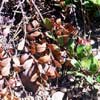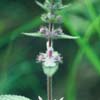Plant Information
Quicklinks
Elementary Lesson: Pictures of Aboriginal Plants

Having shared the same environment for thousands of years, the Aboriginal Peoples of the Boreal Forest have become knowledgeable of the trees and plants that surround their world daily. This knowledge has varied from person to person. Most people had a basic understanding of the natural environment; however, only a select few (usually Elders of a community) were—and to this day remain— have developed a thorough knowledge of the forest. This broader knowledge, which includes an understanding of the ways in which different forest plants could and should be used (e.g., as food or as medicine) in everyday life, was generally passed from generation to generation by word of mouth.

Each Aboriginal community’s relationship with the forest was—and continues to be—uniquely different. Therefore, each community’s knowledge of the forest was, in many ways, varied. One community could view a particular flower or fruit as a reliable source of food while another community could view the same flower or fruit as potentially harmful. For example, the berries of the buffalo berry plant are traditionally used as food by many northern Aboriginal communities of the Boreal Forest; the Chipewyan people, however, do not eat the buffalo berry and consider it inedible.

Each Aboriginal community’s unique traditions greatly influence the ways in which particular plants were—and are—used by that community. Some plant life is used in the same way or in similar ways by many or even by all Aboriginal communities, while some plant life is used very differently from one community to another. Regardless of differences in Aboriginal communities' knowledge of the Boreal Forest, this knowledge is profound and includes a deep feeling of responsibility. They know that responsible stewardship (that is, taking good care of the forest) means the forest, in turn, will take good care of them, Aboriginal people understand that a deep respect for the forest's living creatures—plants, in this case—will provide them with a variety of plant life which can be used, by those who know how, as food, medicine, building supplies, tools, and so on.






